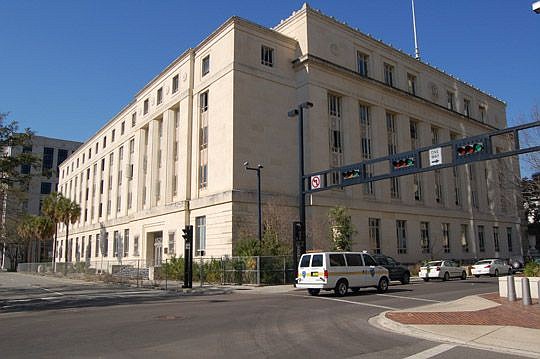
The State Attorney’s Office today can begin calling the old federal courthouse home.
Yet, outside of early kinks any new abode might have, there’s still a lingering issue that’s put the office and city at odds. A disagreement that could end up pushing the total of the unified courthouse project past the $350 million limit city officials have committed to maintain.
The $26 million set aside to renovate the historic building covered the costs of most of the work. Initially, a lack of funds meant the first floor was to be “shelled” and the State Attorney’s Office would occupy the upper floors.
But when the city settled the bill with the construction company that built the courthouse, it freed up another $1.2 million for the project. When the project was bid, responses came in over what the city had budgeted. Only 75 percent of the first floor could be completed.
The other 25 percent — and the funding — is the cause of the tension.
Jackelyn Barnard, communications director for the State Attorney’s Office, said last week in a statement the agreement specifies the main post office, lobby, vestibules and corridor are to be restored.
“We expect the City to adhere to this agreement,” she said.
In an email last week, Public Works Director Jim Robinson said city is aware of the requirement set forth by the U.S. government, “but we find no requirement that all historic preservation must be done at the same time.”
With the courthouse budget not to exceed $350 million, the other 25 percent of the first floor is “not achievable at this time.”
Robinson said the maximum the city could go to reach that limit would be about $1.6 million, not the almost $2.4 million being requested. The $1.6 million is a combination of funding City Council pulled back in recent years that dealt with the closing of Monroe Street and public art, both of which were part of the overall courthouse budget.
But even the $1.6 million figure shouldn’t be used, said council member Lori Boyer.
The public art money will still be needed and is part of the courthouse contract, she said. It was only taken out because council members were told the money wasn’t available.
Complicating the matter is a bill filed this week by council member Kim Daniels that would pull $2.4 million from a general projects fund to finish renovating the building. Not only would that exceed the $350 million cap, but it hasn’t been determined if the account Daniels is trying to draw from is a viable option.
Boyer and other council members have been reviewing capital improvement plans and accounts for the past several months. Money from the account Daniels is trying to access is mostly spoken for, Boyer said. Anything that can be used, she said, would need to be prioritized by council.
If completing the renovation is legally required, the project would need to be weighed against other legally required spending, Boyer said.
The deeper concern for Boyer is how the situation came about: if required, why wasn’t it properly budgeted, with other non-binding areas already done?
“I’m perplexed about that,” she said. “Maybe we don’t have to do them (the renovations) today, but that doesn’t make it any less of a cost.”
Several weeks ago, State Attorney Angela Corey met with Daniels, Boyer, council Vice President Greg Anderson and others on the issue. In addition to uses for her office, she suggested the eastern corridor in question could serve as a conference and wedding facility once completed.
The money needed to do that fully, Robinson recently said, “would bust the bank.”
“We feel pretty strongly about $350 million for the courthouse budget,” he said.
@writerchapman
(904) 356-2466